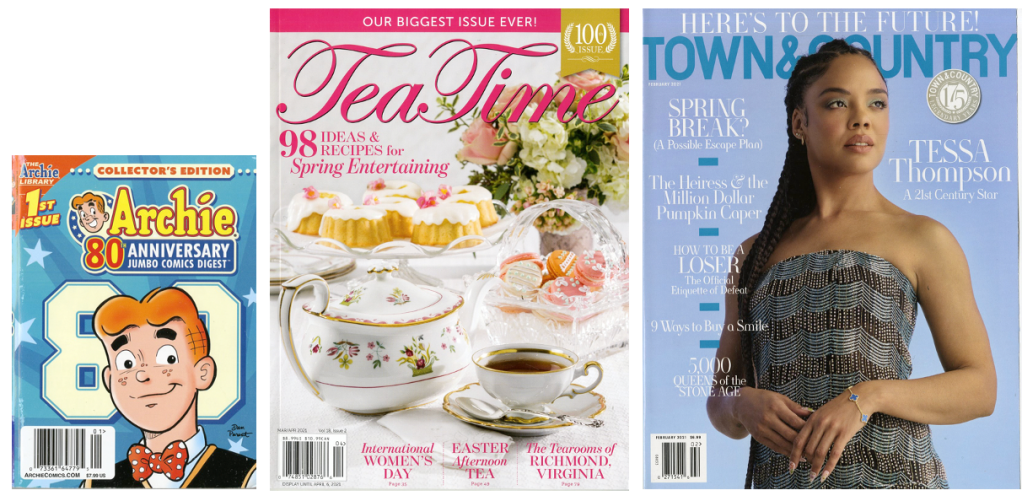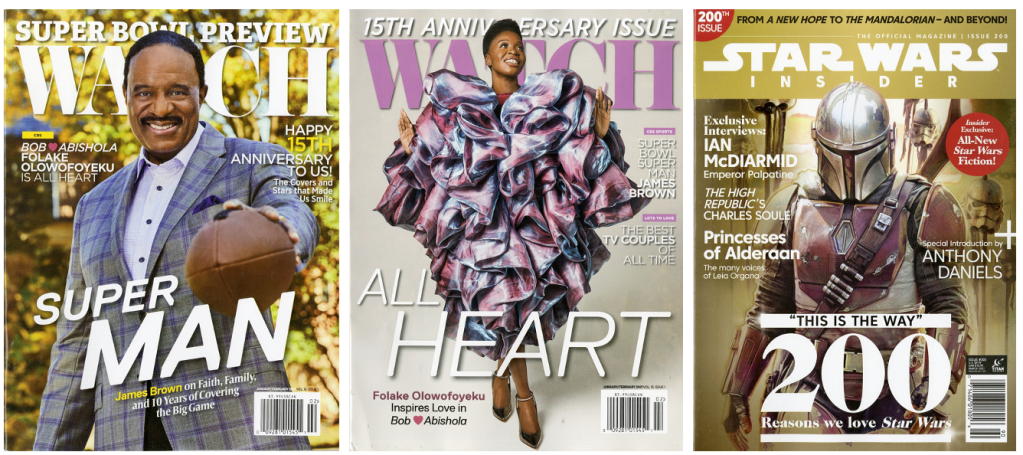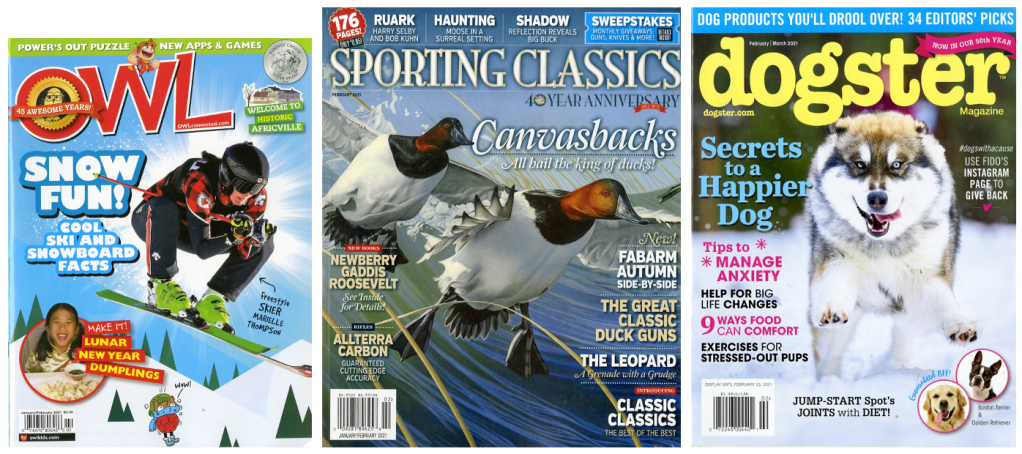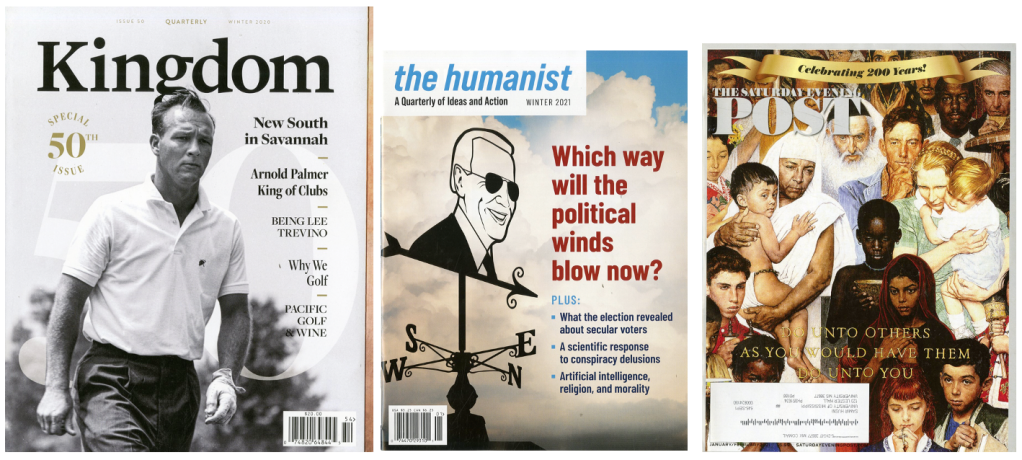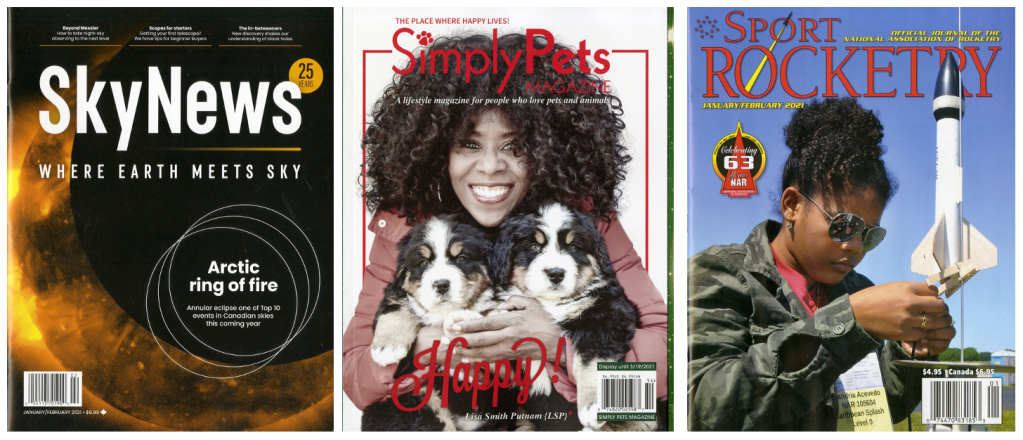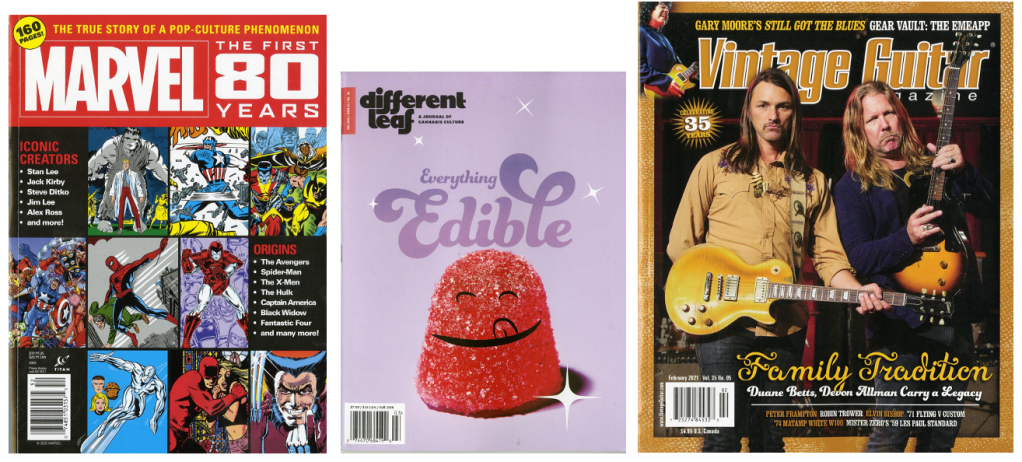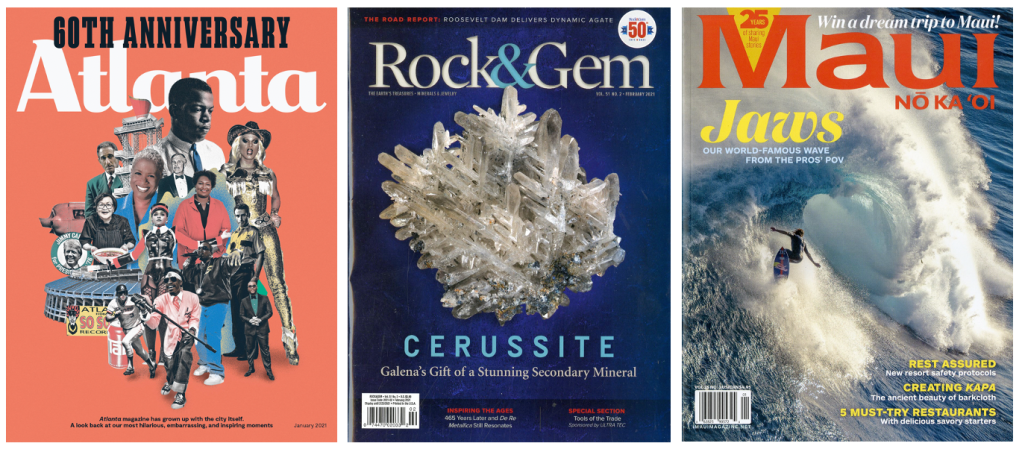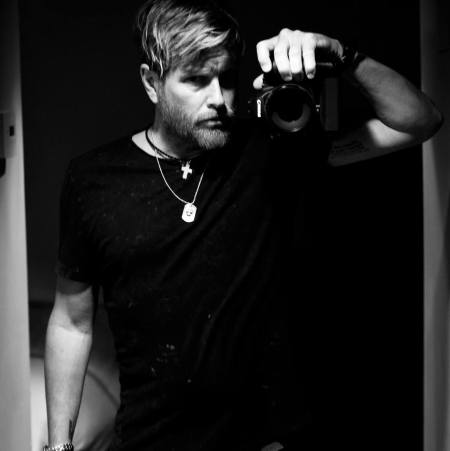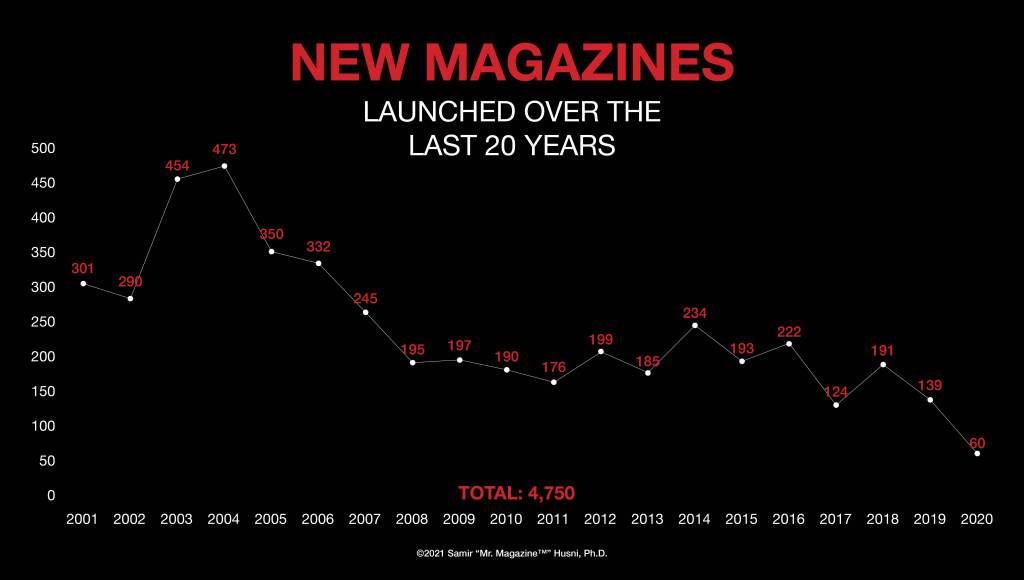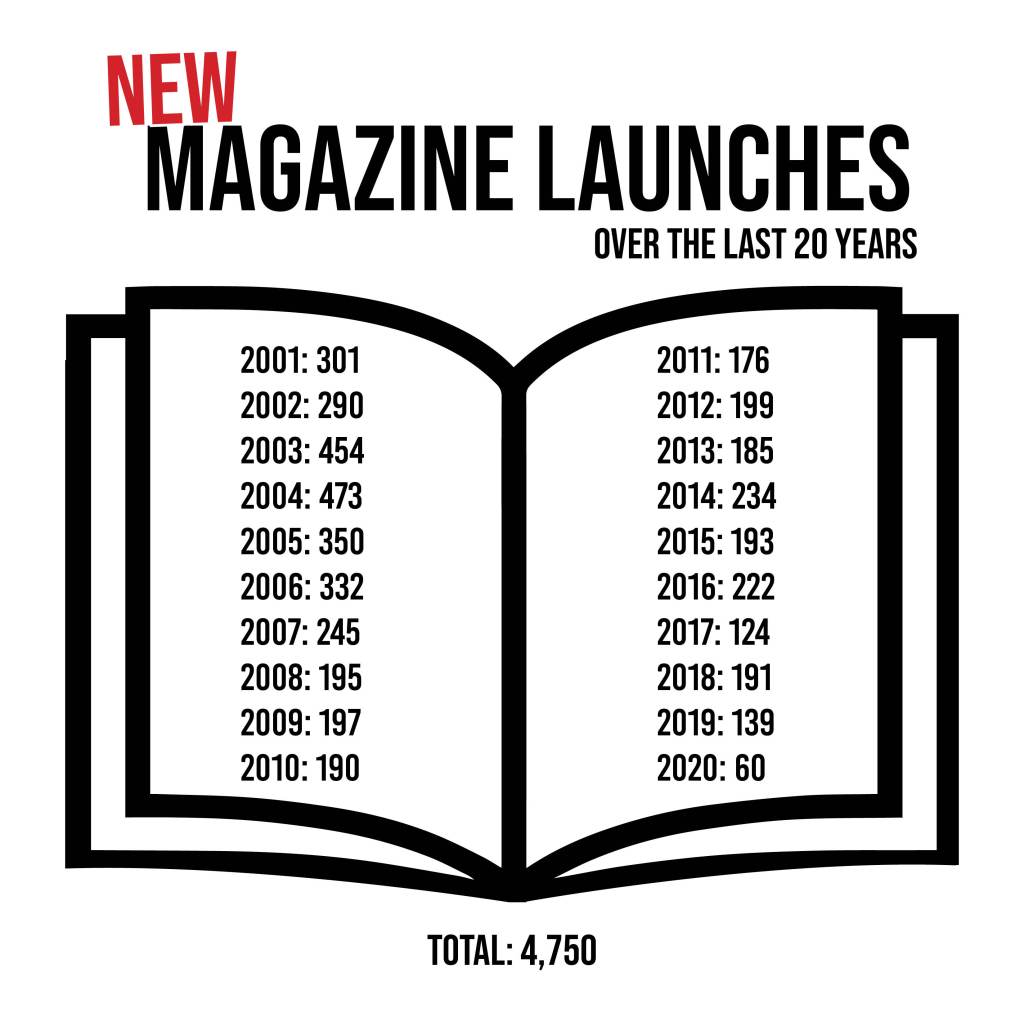“When you and I talked last in 2014, there was just a period where the word legacy was kind of a bad word in this industry. It was considered a negative, because all of the digital upstarts seemed like they were the sole future of media. And there was a skepticism in the industry itself about legacy. And I think what we’ve seen in the pandemic, with the misinformation about vaccines, the election, with the lies that have spread through the campaign and after, I think you’re seeing a resurgence of legacy; the power of legacy media; the value of legacy media, because we have 100 years of trust that nobody can replicate.” Edward Felsenthal…

Edward Felsenthal is the Editor in Chief and CEO of TIME. Prior to his current position, Edward was managing editor of Time.com where he directed its digital operations and successfully created a global 24/7 news operation.
I spoke with Edward recently and we talked about his current role at TIME and operating such an esteemed and important legacy title during a pandemic. Soon the magazine will celebrate its 100th year in publishing. On March 3, the brand will be 98-years-old and is still going strong. Edward shared that after they were removed from the constraints of being a part of Time Inc. and sold by Meredith to their current owner, opportunities became a reality, even during a pandemic.
In April of this year TIME will launch a special print issue called TIME Business and rollout a digital component of it as well. Edward said it will be a vertical area of focus for the company. The print magazine is now biweekly with a minimum of 100 pages per issue.
So, while times may be trying and uncertain right now, Mr. Magazine™ can appreciate this ray of hope on the horizon, hope which always springs eternal. So please enjoy the Mr. Magazine™ interview with Edward Felsenthal, CEO & Editor in Chief, TIME.

But first the sound-bites:
On how his role is different today as CEO of the entire Time brand than when he was managing editor of Time.com: The theme is the same throughout, which is transformation. We have a brand that will be 98-years-old next week, March 3rd. And so we’re nearing our 100th anniversary. Our brand has been built on this amazing magazine, which we all love and that I grew up reading. The task of the last couple of decades, and certainly the theme of my tenure at Time, which started right before you and I talked in that 2014 conversation, has been transformation. What are we going to build on top of the magazine? What is its digital future and where can the brand go? So, that’s the work I’ve been engaged in since Rick Stengel and Nancy Gibbs hired me.
On how the turmoil of 2020 impacted TIME: First of all, like everyone, we had to figure out how to do what we do remotely. We’re at almost a year from when we sent everyone home from our New York headquarters. We had just moved into a beautiful new office in Midtown a few months before and we were just adjusting to that space when everything went remote. And the rise in and realization of the danger of misinformation that ran through the election and continues to run through the world we cover has been a massive change in society.
On how TIME combats the spread of misinformation: You had a presidency conducted by Twitter. And so I think it extends beyond the pandemic and it extends beyond the media. Obviously, we have a role to call it like it is; to commit to truth. We have an opportunity as a brand. And I think what we’ve seen in the pandemic, with the misinformation about vaccines, the election, with the lies that have spread through the campaign and after, I think you’re seeing a resurgence of legacy; the power of legacy media; the value of legacy media, because we have 100 years of trust that nobody can replicate.
“Obviously, we have a role to call it like it is; to commit to truth. We have an opportunity as a brand…” Edward Felsenthal

On anything new on the horizon for print: With Time Inc., as I said, there were some constraints. Many times opportunities and investments went to other brands. But now, in April, we’re launching TIME Business and we’ve hired a terrific editor from The Wall Street Journal. It’s going to be a vertical area of focus for us. We’ll launch it with a special print issue and a digital rollout in April, looking at the role business plays in these various crises the world is facing.
On how he decides when content should be in print and what content should go online: We love print and I love print. And we have a very strong presence in print’ we’re a million-six subscribers in the U.S. We’re the largest player in print on news in the U.S. and in number of subscribers. Every issue is 100 pages at least, generally more. We’re really using print as a vehicle to go deep.
On whether moving forward, TIME will continue to be biweekly with double issues: Yes, double issues. A lot of brands now are doing double issues with 70 pages. I think the 100-page experience is a better experience. And it’s what print is supposed to be. It’s depth and you can immerse yourself into it in a way that you can’t in a 56-page book.

On what motivates him to get out of bed in the mornings: It goes back to what we talked about earlier. This is a moment of crisis for all of us across the world and I feel at TIME we have an opportunity to make a difference as the world rebuilds. We’ve really totally adjusted in the way we think about our coverage in light of the last year. And what the world is facing is unprecedented. We’re facing these multiple crises all over the world all at once. Health crisis; crisis of inequality and injustice; a sustainability crisis; a trust and truth crisis; an economic crisis. And the opportunity in these crises is how we rebuild. What gets me up in the morning is thinking about the role that TIME plays in this.
On how he unwinds in the evenings: I have three young kids, great kids. An upside to having our offices being remote is it’s two and a half hours of commuting that I don’t have to do. We have homeschooling here; we have remote work. It’s crazy. So there’s not a lot of R & R.
On what keeps him up at night: It’s just been such a challenging time, such a challenging year. As I said, I’m incredible inspired by the TIME team, their commitment and focus and coordination across the global team. A big worry of mine is burnout and stress, and the fact that I had trouble answering the “how do you relax” question is indicative of where everybody is right now. (Laughs)
And now the lightly edited Mr. Magazine™ interview with Edward Felsenthal, CEO and editor in chief, TIME.

Samir Husni: Last time we chatted, you were the managing editor of Time.com, now you’re the CEO and editor in chief of the entire brand. How different is your role today than what you were doing?
Edward Felsenthal: The theme is the same throughout, which is transformation. We have a brand that will be 98-years-old next week, March 3rd. And so we’re nearing our 100th anniversary. Our brand has been built on this amazing magazine, which we all love and that I grew up reading. The task of the last couple of decades, and certainly the theme of my tenure at Time, which started right before you and I talked in that 2014 conversation, has been transformation. What are we going to build on top of the magazine? What is its digital future and where can the brand go? So, that’s the work I’ve been engaged in since Rick Stengel and Nancy Gibbs hired me.
A lot of magazine companies and Time Inc. was one of them, although there were some early efforts, the profits from print were so good for so long the digital transformation happened slowly. Starting in 2014, I remember during the interview process for Time.com, the lead story was about Lincoln. So we really set about for the next few years building a major website; building an audience; building the relevance of the brand between the magazine and the web.
We built a huge social presence; we’re one of the largest players now on Twitter, Facebook and Instagram in our business. When I got to Time, we did about four videos per week, which were usually an editor interviewing another editor about what was in the magazine that week. We’ve now got an Emmy-winning video team and a studio division that is producing broadcast television and documentaries, and growing very quickly.
My role expanded when my friend Nancy left and I became editor and we also have new owners. As you know, Meredith Corporation bought Time Inc. and put some of the titles up for sale and TIME was one of them. And I led that process for the TIME brand. And when our new owners acquired us and we became an independent company for the first time in many decades, they asked me to take on this added role. But the work has been the same, transforming the brand; how do we have impact in our journalism and how do we deliver that journalism across platforms.
We had expanded into live events until the pandemic hit. We’re now doing virtual events. The pandemic accelerated massively all of that change.
Samir Husni: In 2018, under the new ownership, you went more toward an entrepreneurship and all of these changes began to take place. Then everyone was hit by the pandemic, social unrest, and the turmoil of the election. How did all of that impact TIME?
Edward Felsenthal: First of all, like everyone, we had to figure out how to do what we do remotely. We’re at almost a year from when we sent everyone home from our New York headquarters. We had just moved into a beautiful new office in Midtown a few months before and we were just adjusting to that space when everything went remote.
Actually, there was kind of a prophetic moment for us in the early part of last year, we were on our morning editorial meeting, which is where people from other parts of the country and the world join virtually and one of the editors in our Hong Kong office said greetings from the future, because they had already left their offices. That comment was driven home to me a couple of weeks later when we began working from home.
And that was of course a massive transition, but our team did a wonderful job getting everyone out safely and ensuring that our operations continued. And we didn’t miss a beat.
We then had to regroup in several areas. One of the nice things about getting out of Time Inc. was we had been somewhat constrained. All of these brands grew out of TIME: PEOPLE, Sports Illustrated; they all grew out of TIME. They were all pages in the magazine at one point. And we were constrained in some areas within that context.
One of the things that we were able to do as we got out on our own was live events. We had a great TIME 100 Summit in April 2019 with a long list of dignitaries. And we were going to do it again in 2020 until the pandemic came and it wasn’t possible. So we launched TIME 100 Talks, which over the last year has been our fastest growing product in business. So we now do more or less once a week a virtual Summit. So we pivoted very quickly digitally.
Another example was TIME for Kids. We’ve been doing it for 25 years; it’s print and it goes into schools. But nobody was in school, so there was no way to deliver it. In a period of two or three months, we did something that was already on our roadmap, but the pandemic just hurried it along, now it’s a digital subscription product. Of course, we had to make the school product digital, but it also enabled us to offer for the first time an at-home option for kids and an international option for kids. We’ve accelerated a lot of the digitization of our work and what we do.
You mentioned social unrest and the overdue awakening around racial justice that began in earnest after the killing of George Floyd and obviously that has played out in both our coverage and in our company. We’ve dedicated ourselves to the areas of focus in our coverage. One of them is equality and justice, and injustice. And that has been a value running through our coverage for a while, but was redoubled in 2020.
We’ve also recognized that we must hold ourselves accountable for ensuring that equality and justice and inclusion runs through our company, and building a company that reflects the demographics and experiences that we cover. So that has been a powerful change and direction for us.
And not just the presidential election, but the rise in and realization of the danger of misinformation that ran through the election and continues to run through the world we cover has been a massive change in society. Charlotte Alter and some of our team went on the road in the Fall and did a series where they really explored and exposed what was called on that piece “Unlogic.” And the prices of unlogic. I think we all thought at some level there was a combination of optimism and realism. This crisis of misinformation and some of the other crises that the pandemic and 2020 exposed are going to be with us for a long time.

Samir Husni: How does TIME combat the spread of misinformation?
Edward Felsenthal: Martin Baron, who is retiring from the Washington Post, has been doing a series of interviews. Recently in one, he was asked this same question and he said, and I agree with him, the press, the media, we have a big role in addressing this crisis, but it obviously extends way beyond us. And talking about the impact of the pandemic, I think a lot of it goes back to so much media now coming through social media, where this is no filter or where the filter are minimal.
And you had a presidency conducted by Twitter. And so I think it extends beyond the pandemic and it extends beyond the media. Obviously, we have a role to call it like it is; to commit to truth. We have an opportunity as a brand.
When you and I talked last in 2014, there was just a period where the word legacy was kind of a bad word in this industry. It was considered a negative, because all of the digital upstarts seemed like they were the sole future of media. And there was a skepticism in the industry itself about legacy. And I think what we’ve seen in the pandemic, with the misinformation about vaccines, the election, with the lies that have spread through the campaign and after, I think you’re seeing a resurgence of legacy; the power of legacy media; the value of legacy media, because we have 100 years of trust that nobody can replicate.
And that’s not everything because there are people out there who are going to believe what they believe and for whom the legacy either doesn’t matter or they treat as a negative. But I think an institution like ours has a tremendous amount of trust. At a time when there’s very little trust in society at large; we have a lot. And I think we have an opportunity there to use that.
I would add that I think that trust applies, not just what to know, but what to do. We’ve seen that in the pandemic. What I mean by that is for decades TIME’s role was informing people about what’s happening in the world. But we’re also seeing that people trust us as I said, not just about what to know, but about what to do in their own lives.
And we asked what is our value-add going to be in covering the pandemic? And we said that it was going to be holding governments accountable, providing trusted guidance about the pandemic and the health issues; it’s going to be celebrating the front line workers and this incredible moment where people were coming together in powerful ways. But also providing clear information about how to keep safe. The vaccines as they’ve developed, the masks, and really providing guidance to our readers as human beings and to their families.
We launched a Coronavirus newsletter that is now over 100,000 subscribers, the fastest growing newsletter by far. And I think that’s another level where trust connects to the pandemic. We have found our role, and we had it all along, in the guidance we’re providing to people about their own health and the health of their families during the pandemic.
Samir Husni: Anything new on the horizon as far as print that you’d care to talk about?
Edward Felsenthal: With Time Inc., as I said, there were some constraints. Many times opportunities and investments went to other brands. But now, in April, we’re launching TIME Business and we’ve hired a terrific editor from The Wall Street Journal. It’s going to be a vertical area of focus for us. We’ll launch it with a special print issue and a digital rollout in April, looking at the role business plays in these various crises the world is facing.
We’ve always had business coverage, but the focus of business at Time Inc. was Fortune, so we have an opportunity now and a great new leader coming in for it.

Samir Husni: I’ve noticed that TIME the magazine is published biweekly now instead of weekly, with an additional issue in January. Yet the website is 24/7. How do you decide what content should be in print and what should go online?
Edward Felsenthal: We love print and I love print. And we have a very strong presence in print’ we’re a million-six subscribers in the U.S. We’re the largest player in print on news in the U.S. and in number of subscribers. Every issue is 100 pages at least, generally more. We’re really using print as a vehicle to go deep. Nobody is getting their news in a physical product delivered to their door. Breaking news is already there; our readers know what’s happening in the world when they pick up the magazine. So we want to give them depth and take them somewhere, and an incredible experience with that physical magazine, 100 pages with a great glorious cover.
We have 2.3 million print and digital subscribers around the world, so all of our content is on the website. We’ve launched a digital subscription that is a huge area of focus for us, growing our digital relationship with our consumers. Our print readers can connect their accounts to digital. We’re just a few weeks into it, but it’s great to see the interest in TIME digital and that people are willing to pay for our digital content as well as our print.
Some brands have pulled out of video. Our philosophy has been multiplatform. We love print; we’ve invested tremendously in digital and digital subs; and we’ve built out video and are doing short and long-form video, and in-studio. We did three, one-hour primetime broadcast specials in the Fall of 2020. So, we’re committed to multiplatform and we’re reaching different people on different platforms; expanding our audience and expanding our impact and reach of the journalism that we do. And that’s incredibly exciting.
Samir Husni: Moving forward, TIME will continue to be biweekly with double issues?
Edward Felsenthal: Yes, double issues. A lot of brands now are doing double issues with 70 pages. I think the 100-page experience is a better experience. And it’s what print is supposed to be. It’s depth and you can immerse yourself into it in a way that you can’t in a 56-page book.
We have an incredibly loyal readership, a million-six subs and people just love the brand. And we say thank you.

Samir Husni: Henry Luce was described as Time’s lightning and Briton Hadden as its thunder. Are you both the lightning and the thunder now?
Edward Felsenthal: (Laughs) I think I’m lightning. I’ll have to think about who’s thunder.
Samir Husni: What motivates you to get out of bed in the mornings?
Edward Felsenthal: It goes back to what we talked about earlier. This is a moment of crisis for all of us across the world and I feel at TIME we have an opportunity to make a difference as the world rebuilds. We’ve really totally adjusted in the way we think about our coverage in light of the last year. And what the world is facing is unprecedented. We’re facing these multiple crises all over the world all at once. Health crisis; crisis of inequality and injustice; a sustainability crisis; a trust and truth crisis; an economic crisis. And the opportunity in these crises is how we rebuild.
So what gets me up in the morning is thinking about the role that TIME plays in this. There aren’t many brands like ours; we’re global; we have 100 years of trust and a brand that can reach everywhere in the world. We have an opportunity and an obligation to spotlight solutions, write about solutions for the crises themselves, but also focus our journalism on how we can make the world better.

Samir Husni: After a very busy day, how do you unwind in the evenings?
Edward Felsenthal: I have three young kids, great kids. An upside to having our offices being remote is it’s two and a half hours of commuting that I don’t have to do. We have homeschooling here; we have remote work. It’s crazy. So there’s not a lot of R & R.
I have some friends whose kids are older who talk about just finishing something on Netflix and they’re about to start something else. We’re doing a little bit of that, but it’ll take me another 20 years of getting through Netflix. There’s not a lot of relaxing. (Laughs)
But I feel very fortunate. We’ve been healthy; the TIME team has really pulled together. It’s been really hard on everybody. And I’m really proud of the team.

Samir Husni: My typical last question; what keeps you up at night?
Edward Felsenthal: It’s just been such a challenging time, such a challenging year. As I said, I’m incredibly inspired by the TIME team, their commitment and focus and coordination across the global team. A big worry of mine is burnout and stress, and the fact that I had trouble answering the “how do you relax” question is indicative of where everybody is right now. (Laughs)
And we’re working hard to do what we can to make sure people take their vacations, even though sometimes it’s unclear where to go. Or to take time off and encourage them to raise their hand if they feel burned out. But everyone is so committed to what they do. But that’s a concern, mental health and wellness as we approach the year mark of this massive change in the way we live and work.
Samir Husni: Thank you.





































